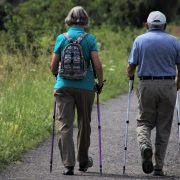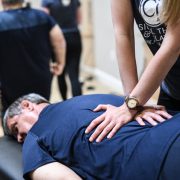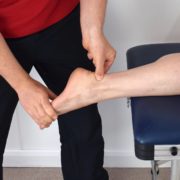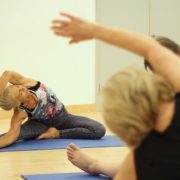When Exercise Hurts Your Back Instead of Helps
The research continues to show that the best treatment for back pain is exercise. But what do you do when exercising hurts your back instead of helps?
What most people do when exercise flares their back up is they just stop. They simply wait for the pain to go away – and begin the cycle all over again. This is not the best strategy. Instead, why not figure out why exercise might be hurting your back and do something about it?
Here are 5 reasons why exercise might be hurting your back instead of helping:
1. Its the wrong type of exercise
While the research isn’t wrong about exercising and back pain – the type of exercise you choose is important. For example, walking is generally considered one of the best exercises for back pain sufferers. But there are certain types of back pain where walking flares you up. In these instances, it doesn’t mean that walking is “bad” for you – and it doesn’t mean you have a serious problem. Many times, it simply means you need a different type of exercise first that gets you back to walking normally. Same goes for strength training and core training. Exercise is good for back pain – but if it flares you up – don’t be quick to blame the exercise. You may just be doing things in the wrong order. Working with a back pain expert can help minimize this and make sure you’re doing the right exercises at the right time – and that won’t flare you up.
2. Stability training is introduced too soon
Stability training is an important part of back pain recovery – but I often see it introduced too soon – and typically before good mobility is fully restored. Mobility is something you always want to look at first. If you don’t have full mobility in your spine, there is a reason. And when your spine doesn’t move well, you risk developing compensatory movement patterns that cause structures in and around your spine to get irritated. When it comes to stability training, there is often resistance or load involved. The last thing you want to do is add load to the spine that is already compensating and irritated. This is a sure-fire way to flare up your back and why exercise might be hurting you instead of helping.
3. You aren’t activating your core
Knowing when and how to properly activate your core is different from having a strong core. You can have the strongest abs in the world – but if you can’t use them when they count – it’s useless. Knowing how to properly activate your core is essential when you exercise, but especially when you have back pain. If you don’t activate your core properly when you’re lifting weights, or performing complicated movements that require good coordination, you’re setting yourself up for injury. The ability to activate your core properly is developed through motor control training. It’s where we teach your mind how to recognize and activate specific muscles, during specific activities, so that it eventually becomes habitual. If you’re constantly having back pain every time you exercise or try to strengthen your core, it could be that you lack the ability to activate it when it counts.
4. You aren’t breathing properly
Not breathing properly can significantly impact the effectiveness of your exercise routine and impede your ability to perform an exercise properly. As mentioned previously, knowing how to activate your core is crucial when you exercise, and in order to activate your core properly, you must be able to breathe properly. Your deep core is made up of four parts: your deep abdominals, your deep back muscles, your pelvic floor, and your diaphragm. Your diaphragm is what controls your breathing. Let’s say you hold your breath when you exercise. When this happens it means your diaphragm isn’t expanding or contracting in the way it needs to for your deep core to be fully functional. Additionally, when your diaphragm doesn’t work like it should, it adds unnecessary strain to both your back muscles and your discs. If you’re not in tune with your breathing, and you aren’t timing it properly, it’s another reason why exercise might be hurting your back instead of helping.
5. You’re using improper form
The last and most common reason why exercising might be hurting your back is because you aren’t doing it right. There’s a lot of people out there who think posture and form don’t really matter. But they do. If you’re lifting weights – especially when frequently and repetitively – you want your spine to be in good alignment. It might not hurt the first time you lift with improper form, but it will hurt after several weeks or months when you get to your 100th rep. Same goes for body weight exercises. Just because you aren’t adding an external load to your spine doesn’t mean you can’t aggravate it by doing something with poor form over and over. This is where I see most people get in trouble. If you’re going to exercise – and you want to exercise daily – do it with proper form and posture or it’s going to catch up to you and keep causing your back to flare up.
If exercising is currently hurting your back instead of helping – it could be due to one of these 5 reasons. Get expert help to figure out which one it might be. Because at the end of the day – exercise really is good for your back. If done correctly, timely, and in the right order – it will help your back instead of hurt it.
Ready to get help with your pain or injury?
Request to speak to one of my specialists to see if we would be the right fit to help you get out of pain. CLICK HERE to request a Free Discovery with one of my specialists.
Dr. Carrie Jose, Physical Therapist and Pilates expert, owns CJ Physical Therapy & Pilates in Portsmouth, NH. To get a free copy of her guide to taking care of back pain – click here.










